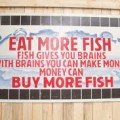
The most popular post on my blog to date is still this one. It remains the case that I owe Paleo everything. It started me out on a glorious journey, where every day I’m one step / mouthful closer to eternal health fuelled happiness. I’ve tweaked the blue print, staying true to its principles to devise my own kind of Paleo. Eg latest rules on cake? If I can see who made it, I’ll eat it. I even got a lesson in sponge baking from a friend this summer.
Alongside a more relaxed approach to eating cake I’ve also become increasingly vegetarian and eaten a lot less meat.
One of the most common misconceptions about Paleo puts meat before vegetables. But think about the hunter-gatherer for a moment. It’s a lot easier to gather than it is to hunt. Hunting took time. Days. Sometimes even weeks from one carcass to the next. Sandwiched in between that was a ton of in season, antioxidant rich, anti-inflammatory fruit and vegetables. When animals were caught and killed, meat was lean and of the highest grade. That animal had roamed free, eaten off the land and not been fattened on grain in a cage without enough room to swish its tail.
The 40:60 meat:veggies ratio is a good one to adopt when it comes to Paleo. And generally the greener and leafier those veggies, with a small amount of starch on the side, the better.
Another huge misconception of the diet’s disciples (and one of my biggest Paleo gripes) is that all meat is created equally. If you take just one thing away from this post may it be that you will support your health exponentially if you think about where your meat has come from before you stick a fork in it. Don’t worry, I’ve been there. I’ve averaged up to four low rent gluten free sausages a day laced with dextrose, E451(i), E221, E300, E330 in my time. It’s a mistake that’s so commonly made.
The (brilliantly named) Epic study found that eating processed meat, such as bacon, ham or salami, had a negative effect on health. Anything over 40g a day and deaths from heart disease and cancer began to climb.
But let us not tar all meat with that chronic-disease inducing brush. Meat is an important source of certain nutrients and packs a serious protein punch loaded with iron, zinc, several B-vitamins, vitamin A and essential fatty acids. Meat is something I love and enjoy.
When eating meat now, it’s about less but better. I keep my eyes peeled for important words like organic, grass fed, pasture-reared and free range. Don’t bother wearing yourself out with painful laments that “it’s a rip off”; “I can’t afford it”; “I can’t get it anywhere”; “how do I even know if my chicken was cuddled before it was culled?”. Instead, here’s some tips for getting round all that:
1. As before, think less but better. Remember the 40:60 rule?
2. Cut your cloth / joint accordingly. Organ meats represent insanely good value and will provide essential nutrients that so few foods can deliver (think liver and vitamin A). Larger, less desirable cuts of meat will last longer. Slow cooked pulled pork shoulder will leave you shunning a loin for life.
3. Ask questions. If it’s not clear to see how the animal was reared before slaughter, ask. I was so surprised to find an ‘award winning’ local(ish) butcher selling whole chickens that weren’t even free range.
4. Consider buying your meat online if your local butcher isn’t up to scratch. There’s a huge amount of choice, it’s easy to arrange delivery and the best suppliers will lay out important information clearly for you to make informed choices.
How much meat do you eat in a week? Do you ever stop to think about where it’s come from?
**DISCLAIMER: to mark the launch of its Paleo store front, Ocado very kindly sent me the Eversfield Paleo Meat Selection Box. Keep an eye on my Instagram feed and Facebook page over the coming weeks for all the dishes I plan to serve up from this delightful treat.**




All the discussion